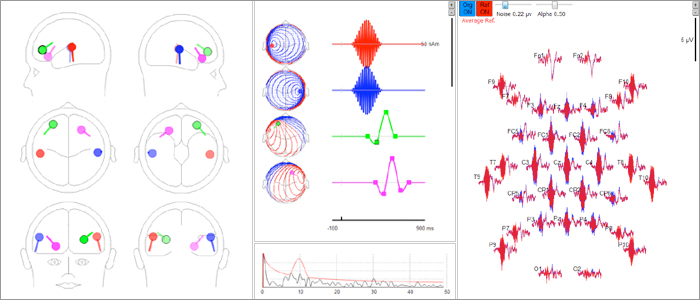BESA Simulator
Create your own evoked and induced data
- Product No: NS-1029
- Manufacturer: BESA
- EEG EP ERP MEG
- Request Quote
Description
BESA Simulator is the perfect tool for simulating evoked and induced brain activity. This free software developed by Patrick Berg allows you to place your sources in the brain, assign them a time-course and save your data with an electrode layout of your choice. You can simulate average data or raw data choosing your own real dataset for overlaying the modeled activity. This allows simulating induced data, as well as evoked data. Use the simulated data to examine your source or coherence analysis techniques. Do you manage to localize the simulated sources? Use BESA Simulator to create your own theories about brain networks underlying your data and see if they hold true in real data. BESA Simulator is an ideal instrument for learning and also teaching about induced and evoked brain activity!
Software Features
- Simulate EEG and MEG data
- See maps resulting from a dipole anywhere within the head
- Add any number of dipoles to a model
- Generate independent waveforms of each dipole (source waveform). You can also read in source waveforms from an ASCII file (BESA swf)
- See the surface data resulting from the model, as reference-free, average reference, Laplacian (CSD) reference, or using any electrode/sensor as reference. Linked electrode pairs can also be defined as reference
- Place a cursor anywhere in the time interval and visualize the scalp activity at that time point
- Specify the parameters of the spherical head model
- Add coherent noise to the data defined in terms of rms level and level of alpha activity
- Learn about filters by displaying the effects of applying various types of filter to your simulated data
- Use any electrode or MEG sensor configuration. MEG configurations from 4-D, CTF, and Neuromag systems are supplied as examples
- Save and read the models you have generated. In addition to the internal model format (*.mod). read BESA bsaand par models
- Save the generated data in BESA avr (ASCII) format
- Simulated raw data can be saved in BESA Simple Binary (Generic) format
- Simulate activity using individual head models (FEM) generated by BESA MRI

